
Benedetto Velli was an Italian painter of the Baroque period. He was born in Florence, and flourished in the 17th century. He painted an Ascension for the cathedral at Pistoia.

Benedetto Velli was an Italian painter of the Baroque period. He was born in Florence, and flourished in the 17th century. He painted an Ascension for the cathedral at Pistoia.

Delft is a city and municipality in the province of South Holland, Netherlands. It is located between Rotterdam, to the southeast, and The Hague, to the northwest. Together with them, it is a part of both the Rotterdam–The Hague metropolitan area and the Randstad.

Francisco José de Goya y Lucientes was a Spanish romantic painter and printmaker. He is considered the most important Spanish artist of the late 18th and early 19th centuries. His paintings, drawings, and engravings reflected contemporary historical upheavals and influenced important 19th- and 20th-century painters. Goya is often referred to as the last of the Old Masters and the first of the moderns.
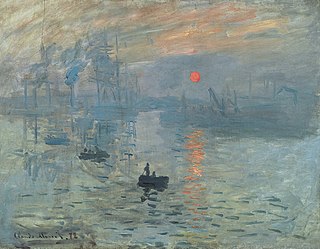
Impressionism was a 19th-century art movement characterized by relatively small, thin, yet visible brush strokes, open composition, emphasis on accurate depiction of light in its changing qualities, ordinary subject matter, unusual visual angles, and inclusion of movement as a crucial element of human perception and experience. Impressionism originated with a group of Paris-based artists whose independent exhibitions brought them to prominence during the 1870s and 1880s.

Paul Cézanne was a French artist and Post-Impressionist painter whose work introduced new modes of representation and influenced avant-garde artistic movements of the early 20th century. Cézanne is said to have formed the bridge between late 19th-century Impressionism and the early 20th century's new line of artistic enquiry, Cubism.

Diego Rodríguez de Silva y Velázquez, Knight of the Order of Santiago was a Spanish painter, the leading artist in the court of King Philip IV of Spain and Portugal, and of the Spanish Golden Age.
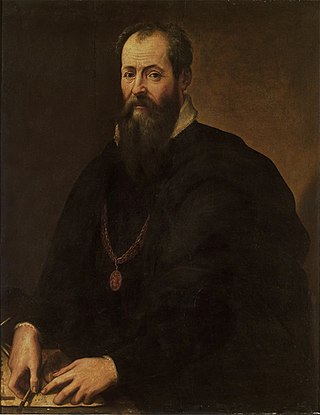
Giorgio Vasari was an Italian Renaissance painter and architect, who is best known for his work The Lives of the Most Excellent Painters, Sculptors, and Architects, considered the ideological foundation of all art-historical writing, and still much cited in modern biographies of the many Italian Renaissance artists he covers, including Leonardo da Vinci and Michelangelo, although he is now regarded as including many factual errors, especially when covering artists from before he was born.
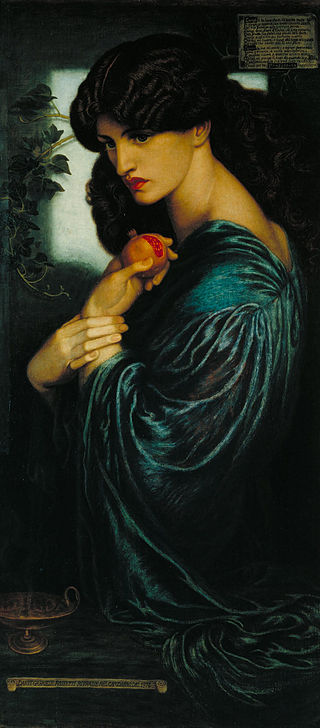
The Pre-Raphaelite Brotherhood was a group of English painters, poets, and art critics, founded in 1848 by William Holman Hunt, John Everett Millais, Dante Gabriel Rossetti, William Michael Rossetti, James Collinson, Frederic George Stephens and Thomas Woolner who formed a seven-member "Brotherhood" modelled in part on the Nazarene movement. The Brotherhood was only ever a loose association and their principles were shared by other artists of the time, including Ford Madox Brown, Arthur Hughes and Marie Spartali Stillman. Later followers of the principles of the Brotherhood included Edward Burne-Jones, William Morris and John William Waterhouse.

Domḗnikos Theotokópoulos, most widely known as El Greco, was a Greek painter, sculptor and architect of the Spanish Renaissance. El Greco was a nickname, and the artist normally signed his paintings with his full birth name in Greek letters, often adding the word Κρής, which means "Cretan".
Abstract expressionism was first used in Germany in 1919 in the magazine Der Sturm, regarding German Expressionism. Alfred Barr was the first to use this term in 1929 for works by Wassily Kandinsky.

Watercolor or watercolour, also aquarelle, is a painting method in which the paints are made of pigments suspended in a water-based solution. Watercolor refers to both the medium and the resulting artwork. Aquarelles painted with water-soluble colored ink instead of modern water colors are called aquarellum atramento by experts. However, this term has now tended to pass out of use.

Ink wash painting (simplified Chinese: 水墨画; traditional Chinese: 水墨畫; pinyin: shuǐmòhuà; is a type of Chinese ink brush painting which uses washes of black ink, such as that used in East Asian calligraphy, in different concentrations. It emerged during the Tang dynasty of China, and overturned earlier, more realistic techniques. It is typically monochrome, using only shades of black, with a great emphasis on virtuoso brushwork and conveying the perceived "spirit" or "essence" of a subject over direct imitation. Ink wash painting flourished from the Song dynasty in China onwards, as well as in Japan after it was introduced by Zen Buddhist monks in the 14th century. Some Western scholars divide Chinese painting into three periods: times of representation, times of expression, and historical Oriental art. Chinese scholars have their own views which may be different; they believe that contemporary Chinese ink wash paintings are the pluralistic continuation of multiple historical traditions.

Futurism was an artistic and social movement that originated in Italy, and to a lesser extent in other countries, in the early 20th century. It emphasized dynamism, speed, technology, youth, violence, and objects such as the car, the airplane, and the industrial city. Its key figures included the Italians Filippo Tommaso Marinetti, Umberto Boccioni, Carlo Carrà, Fortunato Depero, Gino Severini, Giacomo Balla, and Luigi Russolo. Italian Futurism glorified modernity and according to its doctrine, aimed to liberate Italy from the weight of its past. Important Futurist works included Marinetti's 1909 Manifesto of Futurism, Boccioni's 1913 sculpture Unique Forms of Continuity in Space, Balla's 1913–1914 painting Abstract Speed + Sound, and Russolo's The Art of Noises (1913).
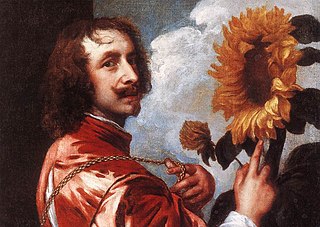
Sir Anthony van Dyck was a Flemish Baroque artist who became the leading court painter in England after success in the Spanish Netherlands and Italy.
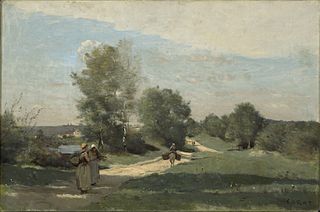
The Barbizon school of painters were part of an art movement toward Realism in art, which arose in the context of the dominant Romantic Movement of the time. The Barbizon school was active roughly from 1830 through 1870. It takes its name from the village of Barbizon, France, on the edge of the Forest of Fontainebleau, where many of the artists gathered. Most of their works were landscape painting, but several of them also painted landscapes with farmworkers, and genre scenes of village life. Some of the most prominent features of this school are its tonal qualities, color, loose brushwork, and softness of form.

Color field painting is a style of abstract painting that emerged in New York City during the 1940s and 1950s. It was inspired by European modernism and closely related to abstract expressionism, while many of its notable early proponents were among the pioneering abstract expressionists. Color field is characterized primarily by large fields of flat, solid color spread across or stained into the canvas creating areas of unbroken surface and a flat picture plane. The movement places less emphasis on gesture, brushstrokes and action in favor of an overall consistency of form and process. In color field painting "color is freed from objective context and becomes the subject in itself."

Black-figure pottery painting, also known as the black-figure style or black-figure ceramic, is one of the styles of painting on antique Greek vases. It was especially common between the 7th and 5th centuries BCE, although there are specimens dating as late as the 2nd century BCE. Stylistically it can be distinguished from the preceding orientalizing period and the subsequent red-figure pottery style.

The Academy of Fine Arts Vienna is a public art school in Vienna, Austria.

Red-figure pottery is a style of ancient Greek pottery in which the background of the pottery is painted black while the figures and details are left in the natural red or orange color of the clay.

Kevin Painter is an English retired darts player, known as "The Artist". He is arguably most famous for finishing as the runner-up to Phil Taylor in the 2004 PDC World Championship final, now widely credited as one of the greatest televised matches in the history of the sport. He was also the winner of the Players Championship Finals in 2011.
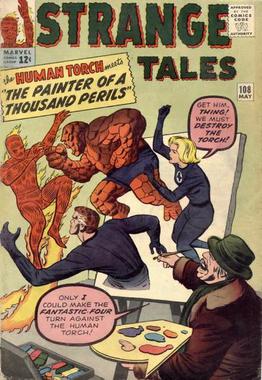
The Painter is a supervillain appearing in American comic books published by Marvel Comics. The character was created by plotter Stan Lee, writer Robert Bernstein, and artist Jack Kirby, and first appeared in Strange Tales #108 (1963).